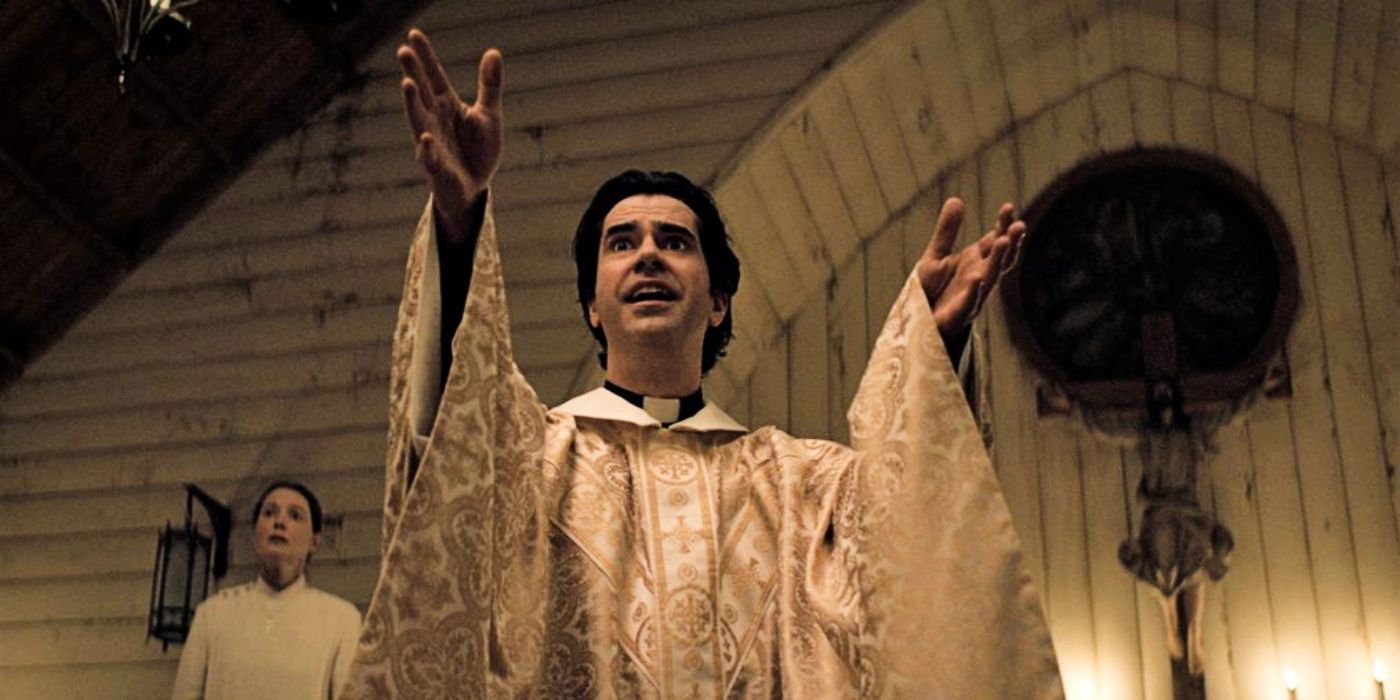Netflix’s new horror hit Midnight Mass features plenty of nods to genre icon Stephen King, including an explicit reference Stanley Kubrick’s adaption of The Shining. The show’s creator Mike Flanagan delivers another horror miniseries that combines chills with inter-generational drama and big existential questions. The thoughtful show addresses issues of faith, zealotry, and community with its story of a mysterious priest arriving on a small island and beginning to perform mysterious miracles.
Flanagan himself is a huge Stephen King devotee, and many elements of the critically-acclaimed Midnight Mass reference the horror author’s substantial body of work. In fact, Flanagan has a close connection with King, having directed the 2019 follow-up to The Shining – Doctor Sleep. There are nods to King dotted throughout the seven episodes of the series, but while some are merely cute Easter eggs, some serve pretty pivotal thematic importance. One example is the shot that reveals Paul Hill’s origins at the close of episode 3.
The first episode introduces Father Paul Hill, who has replaced Monsignor Pruitt after the latter fell ill on a trip to Jerusalem. However, the third episode ends with the revelation that the youthful Paul actually is Monsignor Pruitt, revitalized by a supernatural encounter with a vampire (or “angel”) in a cave during his trip. The reveal is achieved via a secret reference to The Shining, namely a slow zoom into an old photo of a young Pruitt from decades earlier which shows that Hill and the younger Monsignor are the same man. This shows that Hill’s age has been reversed by his vampiric encounter, and how the twist is revealed is a clear lift from The Shining’s famous image of Jack Torrance in an ancient Overlook photo.

The reasoning behind the reference is important for the series, as the miracles Paul achieves could leave even the most cynical viewers convinced that the authentically friendly figure is a force for good in the community. However, in The Shining, the image of Jack seen in the Overlook is often read as proof that the abusive father was perpetually doomed to almost kill his family, and that he fulfilled his fate by arriving at the hotel. Similarly, like series creator Mike Flanagan’s divisive Shining sequel, Midnight Mass implies that Hill’s plans for the town are to bring the island community back to its former glory not just via miracles, but also bloodshed and brutality.
In both The Shining and Midnight Mass, the men seen in the photographs are comfortable in their bygone era and want to force the changing world back into the idealized times captured by those photos. Both Hill and Torrance (and in Dr. Sleep, even the possessed Danny Torrance) are unable to let go of the past and accept that the world must change, even if it means killing to keep it the same. Like Netflix’s underrated Things Heard and Seen, Midnight Mass uses a nod to The Shining to reinforce the idea that its villain can’t let go of the past and embrace change, a recurring theme throughout King’s work and horror more broadly as a genre.




